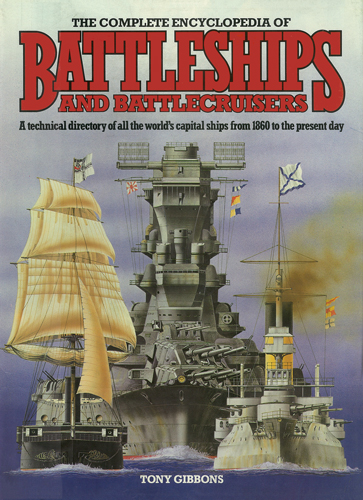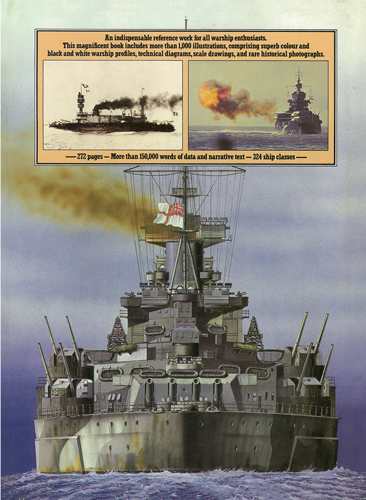The Complete Encyclopedia of Battleships and Battlecruisers: A Technical Directory of All the World's Capital Ships from 1860 to the Present Day/Полная энциклопедия линкоров и крейсеров: Технический справочник всех кораблей мира с 1860 года до наших дней
Издание на английском языке
The big naval gun-and the warship that carried it- was the final arbiter in struggles for sea power, both local and national, for four centuries. It was the foundation upon which European supremacy was built, and it was the dominant factor in shaping a political world map the legacies of which are a prime ingredient of current global problems. We are concerned here with the evolution of this weapon over the last one hundred and twenty-five years and, more particularly, with the type of ship that took it to sea, but first it is necessary to consider, briefly, the background to its development.
Once the practicability of extended sea voyages had been demonstrated, from the exploratory cruises of the late 15th and early 16th centuries, through the establishment of regular trade routes and the opening up of colonies by the European powers, the sea became, as it were, a vast highway, along which vehicles carrying great quantities of wealth would ply, ripe for attack by profit-conscious parties, and along which armies might efficiently be carried in order to prosecute national interests, together with the supply vessels necessary to maintain them. Concurrent with the expansion of seaborne transport came the organisation of fleets of ships to attack or defend it, and, moreover, a gradual revolution in the means of waging war at sea. For centuries, the principal fighting ship had been the oar- propelled galley, built for speed with fine lines and armed with a projecting ram then considered the most likely means of stopping an enemy vessel. Tactics generally relied on the head-on attack, the enemy being despatched by direct contact, perhaps by sinking his ship but more com monly by immobilising it and then boarding it with the aim of rendering its crew hors de combat. Stand-off tactics - with the objective of causing maximum damage to the enemy before actually closing with him -were certainly practised: since Roman times the value of on-board artillery had been appreciated, but the slow, cumbersome launchers were space-consuming and inaccurate, and more faith was placed in the massed arrows and bolts of the fighting men who might be embarked. Attack ranges were, then, opened, but for the purposes of deploying anti-personnel rather than anti-ship weapons.
Contents
Author's Foreword
Introduction
1860-1869
1870-1879
1880-1889
1890-1899
1900s Pre-Dreadnoughts
1900s Dreadnoughts
1910-1919
1920-1929
1930-1939
1940 onwards
Index




